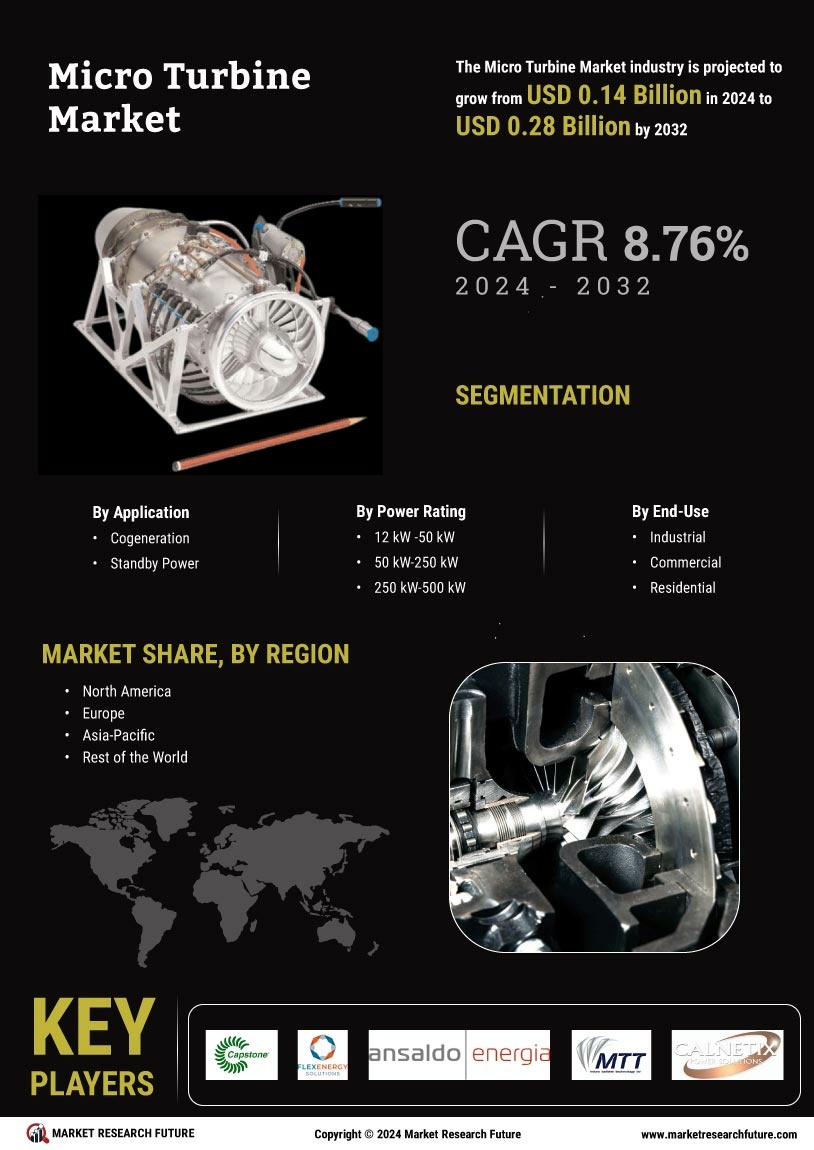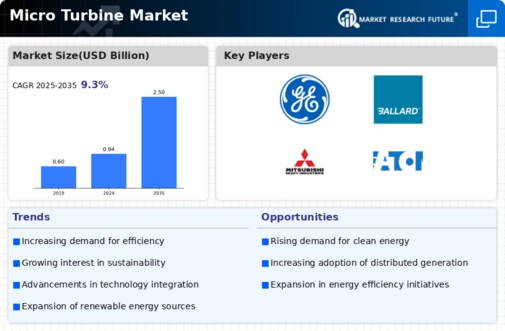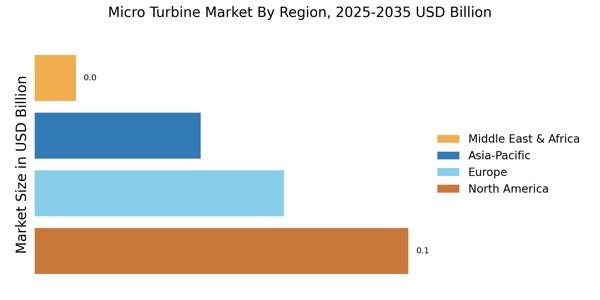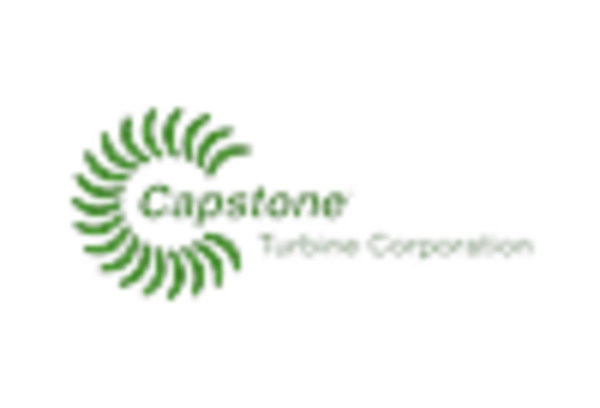Micro Turbine Market Summary
As per Market Research Future analysis, the Micro Turbine Market Size was estimated at 0.14 USD Billion in 2024. The Micro Turbine industry is projected to grow from USD 0.1523 Billion in 2025 to USD 0.3527 Billion by 2035, exhibiting a compound annual growth rate (CAGR) of 8.7% during the forecast period 2025 - 2035
Key Market Trends & Highlights
The Micro Turbine Market is poised for substantial growth driven by technological advancements and a focus on sustainability.
- North America remains the largest market for micro turbines, driven by increasing energy demands and regulatory support.
- The Asia-Pacific region is emerging as the fastest-growing market, fueled by rapid industrialization and urbanization.
- The power generation segment dominates the market, while the combined heat and power segment is experiencing the fastest growth.
- Rising demand for distributed energy generation and advancements in micro turbine technology are key drivers propelling market expansion.
Market Size & Forecast
| 2024 Market Size | 0.14 (USD Billion) |
| 2035 Market Size | 0.3527 (USD Billion) |
| CAGR (2025 - 2035) | 8.76% |
Major Players
Capstone Turbine Corporation (US), FlexEnergy (US), Turbine Technologies (US), Bladon Jets (GB), Ecovent (US), Micro Turbine Technology (US), Turbine Generator Maintenance (US), Turbine Power Systems (US)


















Leave a Comment